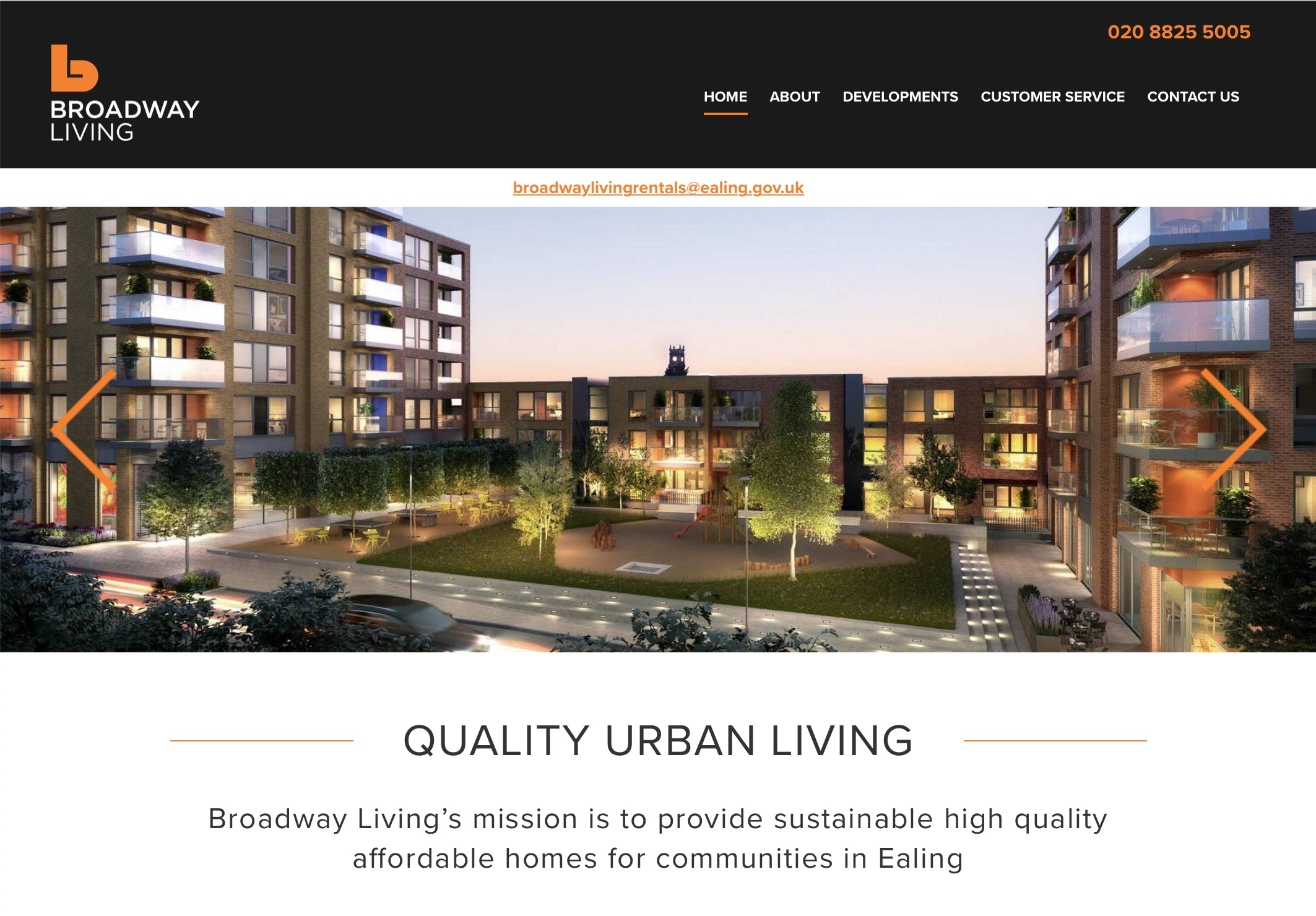Broadway Living (BL) is a wholly owned subsidiary of Ealing Council set up in 2014 with an initial budget from the Council of £19 million ‘to purchase homes over a range of tenures including affordable and private rent, to assist in meeting the housing demand in the borough.’
Since then Ealing Council’s ambitions for Broadway Living have grown, and, according to the minutes of the 10 November 2020 Cabinet meeting at which the plans were approved, its purpose now is to ‘maximise the provision of affordable housing on council owned land, retaining these assets in a wholly owned subsidiary, Broadway Living Registered Provider (BLRP), which was itself governed by the requirements of the Regulator of Social Housing and did not seek to make a developers profit’.
BLRP’s recently published business plan involves the delivery of 1,471 new homes on 18 sites across the borough. Almost two-thirds of these are to be offered at London Affordable Rent (LAR)[1] (63.6%). That said, the programme will rely on cross-subsidy from the sales of homes (both Shared Ownership (12.2%) and private sale (8.8%) currently) to enable the affordable homes to be built. The two largest named sites in this plan are Perceval House and Gurnell Leisure Centre, neither of which yet has planning permission, both of which seriously contravene planning policy at all levels and are facing strong local opposition.
The aim is to deliver these schemes by 2028. This timing is partly determined by GLA grant funding of more than £102 million, responsibility for which will transfer to BLRP. This grant requires that 1,138 affordable homes are started on site by March 2023. However, it is the Council (that’s you and me!) which will have the largest financial exposure during this period through its provision of a borrowing facility of up to £400 million (over 60% more than the Council’s budget for 2019/20 and described by the authors of the November Cabinet report as ‘unprecedented’) while BLRP waits for the first income from the developments to come on stream.
Thereafter the business plan requires that BL ‘develop a sustainable and long-term pipeline of genuinely affordable homes’ and ‘re-establish housing development as part of the Council’s core business.’ It further states that BL is working on proposals for the redevelopment of a number of unspecified school sites across the borough, and that the Council has additionally identified land with potential for up to a further 6,000 new homes.
Local Partnerships, a joint venture between the Local Government Association, HM Treasury and the Welsh Government, has produced a report explaining the different corporate structures available for council owned housing delivery vehicles. In it the business model adopted by Broadway Living is assessed as ‘high risk’. It certainly raises a number of issues for Ealing residents to consider:
- While Broadway Living is wholly owned by the Council, its arm’s-length business structure hides key data from public view, evident already in the suppression of the detailed figures underpinning the BLRP business plan. Yet we, the public, will be on the hook if things go wrong.
- As shareholder, landowner and lender to Broadway Living, the Council’s responsibilities as the planning authority will be seriously compromised. The Cabinet report actually cites ‘close working with the planning department’ as a means of mitigating risk.
- The cost of resourcing the two companies is not revealed, but they will be substantial. For reference, over 10% of the original loan to Broadway Living was to pay for set-up.
- The whole life cycle of the plan (i.e. the time needed to repay borrowing and produce a cash surplus) is 50 years – ironically longer than the lifespan of Perceval House and Gurnell Leisure Centre which are to be demolished and redeveloped under the plans.
- With such huge amounts of money at stake in Broadway Living, will the Council be distracted from all the other services that it is there to provide?
The track record of council-owned housing companies is poor. They have bankrupted Croydon Council. They have lost money in Bexley. (Incidentally, one of the directors of the Broadway Living board is also a non-executive director at Bexley Council’s housing company.) And they have been wound down as unviable in Merton, with the loss of council land to private developers. What could possibly go wrong in Ealing?
[1] London Affordable Rent (LAR) was developed by the Mayor of London to encourage more affordable housing on land developed by housing associations and commercial developers. LAR can be up to 60% of market rent and is often over £60 per week more expensive than social/council rent, which is the cheapest of all rental classifications. After a year’s probationary tenancy, the rental term for LAR is 3-5 years and can then revert to market rent. Under Shared Ownership (SO) a portion of the property is bought while the balance is rented (with rents rising in line with market rents). Owners have the option to increase their ownership share as they become able to afford it. Both LAR and SO are subject to service charges, which rise annually and can include extra costs.


